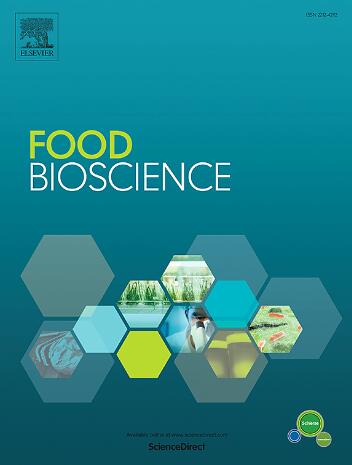The influence of stacking fermentation on pit fermentation and the assembly mode of microbial communities of heap and pit in Maotai flavor Baijiu
IF 4.8
1区 农林科学
Q1 FOOD SCIENCE & TECHNOLOGY
引用次数: 0
Abstract
The influence of stacking fermentation on pit fermentation is multifaceted in the Maotai flavor Baijiu (MFB). However, the influence and contribution degree of stacking fermentation on pit fermentation have not been fully clarified, and microbial community (MC) assembly modes in the heap and pit have not been clearly defined. Based on the analysis of the microbial community structure of stacking and pit fermentations, it was found that 60.82 % of the bacteria and 49.07 % of the fungi in the pit originated from the heap. Additionally, all the dominant microorganisms in the pit were also derived from the heap. Moreover, the bacterial contribution degree of the heap was generally higher than that of the fungi, and their contribution degrees to the microorganisms in the pit reached the highest at 3rd and 4th rounds, which were 84.81 % and 71.88 %, respectively. Furthermore, the volatile compounds of heap fermented grains had a relatively high contribution degree to the accumulation of alcohols, fatty acids and aromatic compounds in the pit. Meanwhile, environmental factors drove Thermomonas and Byssochlamys to construct MC in the heap, while drove Wickerhamomyces and Sphingomonas for constructing the MC of the pit. Finally, the MC assembly of the heap and pit both took the random assembly process as the predominant one. The bacterial community of the heap and pit were mainly assembled by the non-dominant process (64.43 %, 52.61 %), while the fungal community of the heap and pit fermented grains were mainly assembled by the non-dominant process (47.96 %) and the dispersal limitation assembly (43.48 %), respectively. This work clearly clarified the influence and contribution degree of stacking fermentation on pit fermentation, and revealed the MC assembly modes of heap and pit fermented grains, offering significant practical implications for optimizing the fermentation quality of MFB.

求助全文
约1分钟内获得全文
求助全文
来源期刊

Food Bioscience
Biochemistry, Genetics and Molecular Biology-Biochemistry
CiteScore
6.40
自引率
5.80%
发文量
671
审稿时长
27 days
期刊介绍:
Food Bioscience is a peer-reviewed journal that aims to provide a forum for recent developments in the field of bio-related food research. The journal focuses on both fundamental and applied research worldwide, with special attention to ethnic and cultural aspects of food bioresearch.
 求助内容:
求助内容: 应助结果提醒方式:
应助结果提醒方式:


